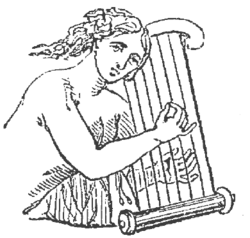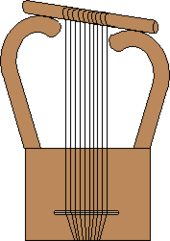This is an old revision of this page, as edited by Alephb (talk | contribs) at 14:24, 9 March 2017 (replaced uncited claim with similar cited claim). The present address (URL) is a permanent link to this revision, which may differ significantly from the current revision.
Revision as of 14:24, 9 March 2017 by Alephb (talk | contribs) (replaced uncited claim with similar cited claim)(diff) ← Previous revision | Latest revision (diff) | Newer revision → (diff) Ancient Nevel (Harp) Ancient Nevel (Harp) | |
| Classification | String instrument |
|---|---|
| Related instruments | |


The nevel or nebel (Template:Lang-he nêḇel) was a stringed instrument in use by the ancient Hebrew people. The Greeks referred to it as the nabla (νάβλα, cf. Latin nabilium). A number of possibilities have been proposed, but most scholars believe the nevel was a harp. The King James Version renders the word into English as psaltery or viol, and the Book of Common Prayer renders it lute. The word nevel means harp in modern Hebrew.
See also
References
- Rich, Anthony. A Dictionary of Roman and Greek Antiquities. New York: D. Appleton & Company. 1874. Page 439.
- Joachim Braun (2002). Music in Ancient Israel/Palestine: Archaeological, Written, and Comparative Sources. Wm. B. Eerdmans Publishing. p. 23. ISBN 978-0-8028-4477-4.
- Neil, James. Everyday Life in the Holy Land. London: Cassel & Company, Ltd. 1913. Page 218.